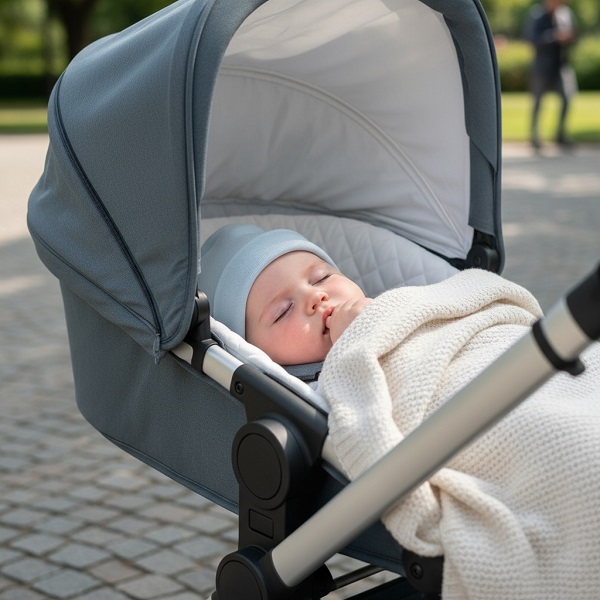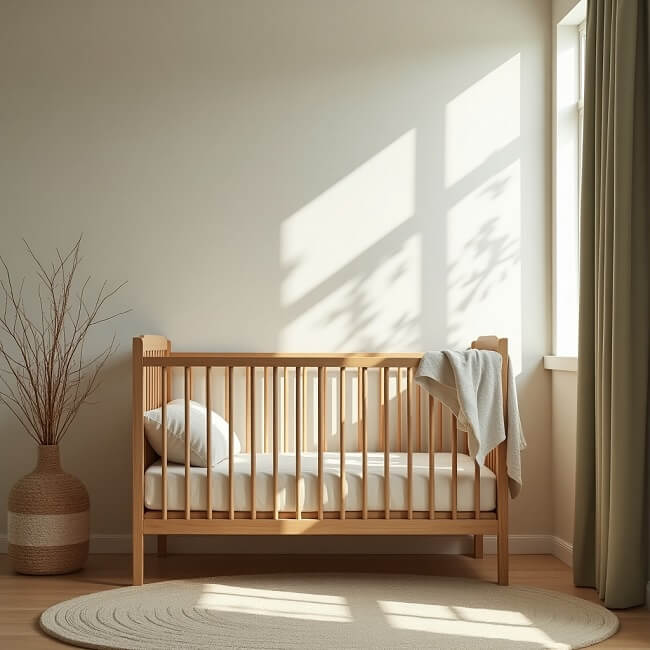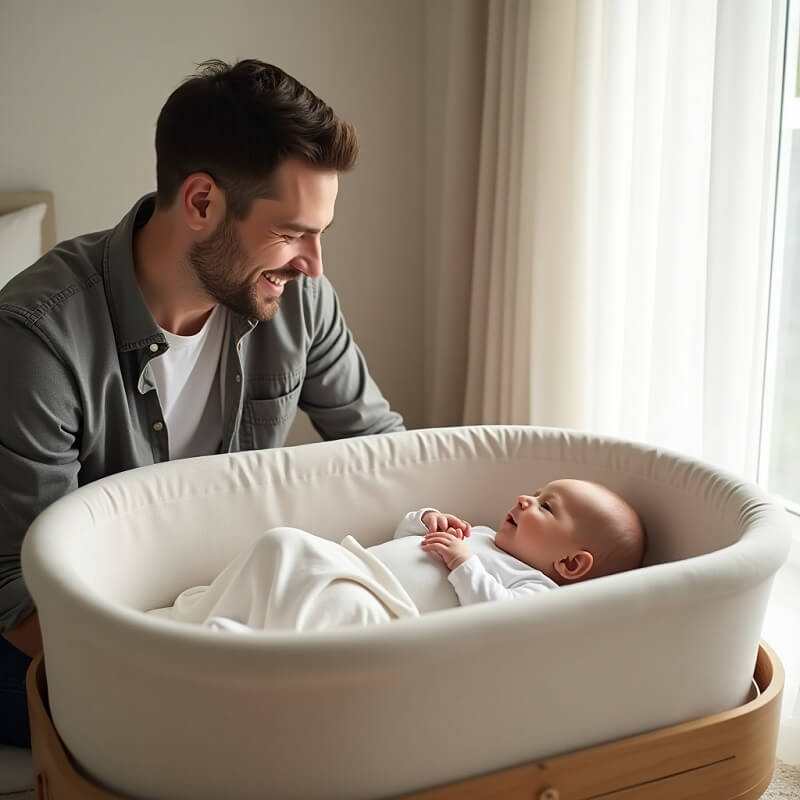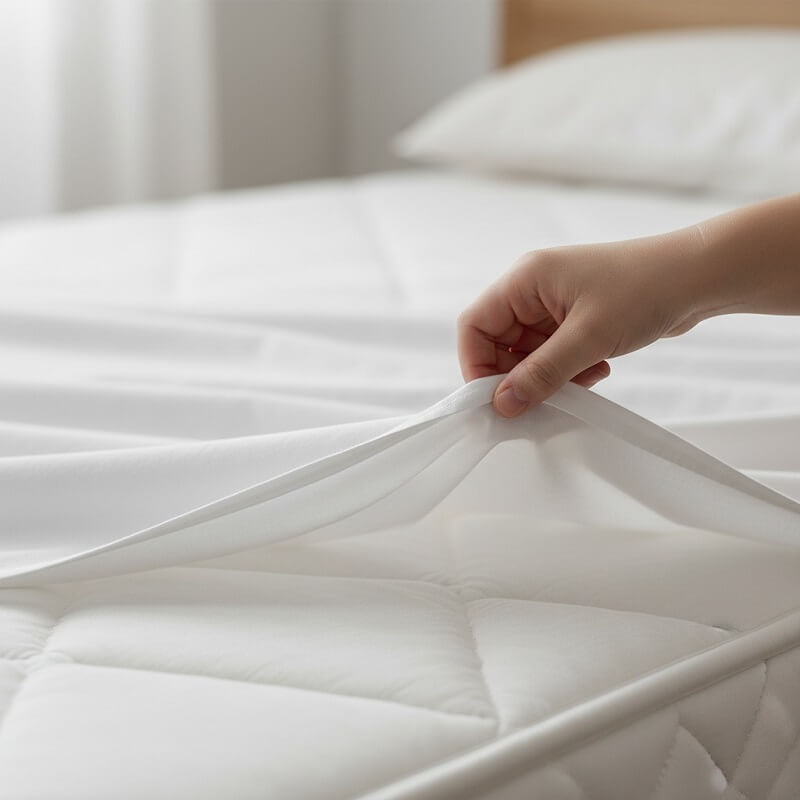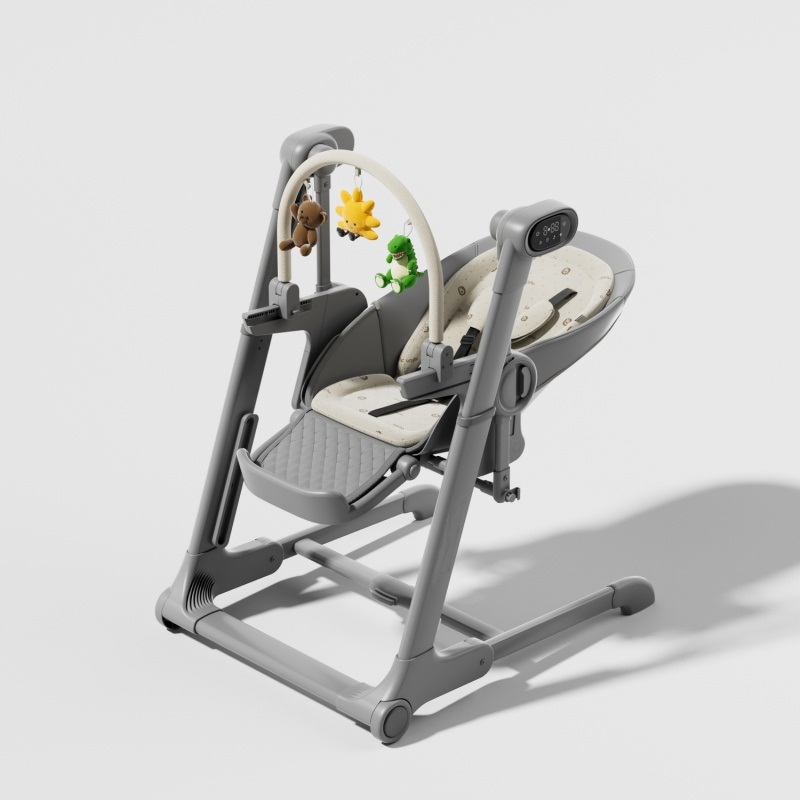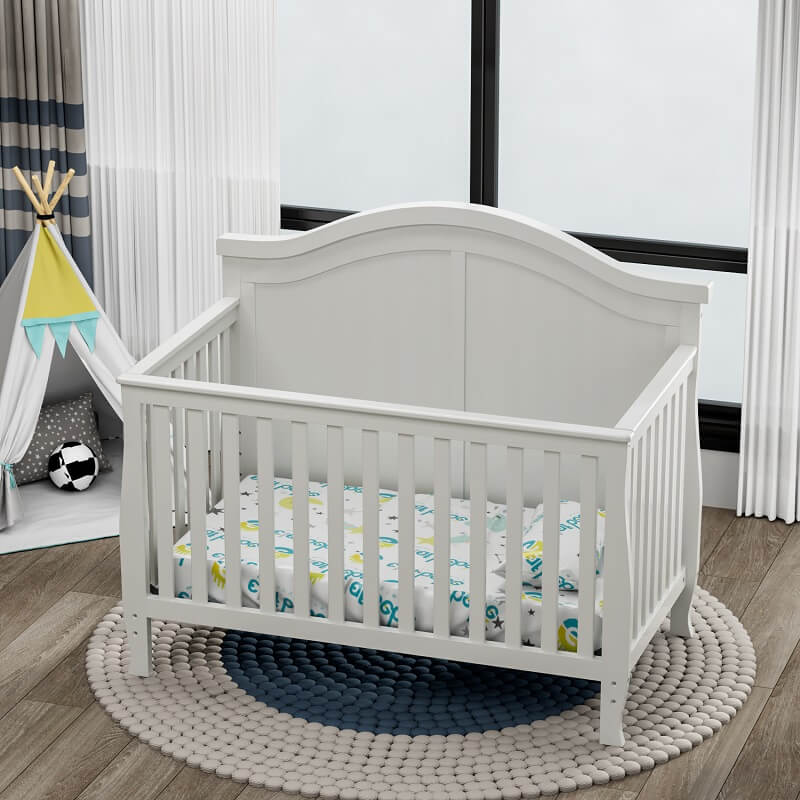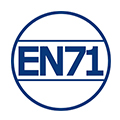It’s no surprise that many parents notice their baby nodding off in the stroller’s gentle motion, and for good reason: it’s soothing, cozy, and often just what a tired infant needs.
But as natural as it seems for babies to sleep wherever they feel secure, you may wonder how safe it really is for them to snooze in a stroller. Is it fine for quick naps on the go? What about letting your baby stay asleep for longer stretches, or even overnight?
The answer, like many aspects of parenting, is nuanced. While a stroller nap during a walk is a common and often wonderful tool, not all sleep in a stroller is created equal. Understanding the difference between a supervised daytime nap and prolonged, unattended sleep is crucial for your baby’s well-being.
Can Babies Nap in Strollers?
The short and reassuring answer is yes, it is generally perfectly fine for babies to take naps in their strollers.
In fact, for many parents, the stroller is a trusted tool for coaxing a fussy infant to sleep. The gentle, rhythmic motion of a walk can be incredibly soothing for a baby, mimicking the movement they felt in the womb. The familiar, cozy confines of their stroller seat, combined with some fresh air, often work like a charm to lull them into a peaceful slumber.
These on-the-go naps can be a practical part of your daily routine. They allow you to get out of the house, run errands, or simply enjoy a walk without being strictly bound to your baby’s nap schedule. For babies who struggle to nap in their cribs during the day, a short stroller ride can sometimes be the key to ensuring they get the rest they need.
While a stroller nap is acceptable, it is not considered an ideal primary sleep environment for extended periods.
A supervised, shorter nap in a properly reclined stroller is one thing; using the stroller as a substitute for a crib for long, unattended sleep is quite another. The distinction is crucial and revolves around factors like supervision, duration, and most importantly, the baby’s position.
Can a Baby Sleep in a Stroller Overnight?

This is where a firm and important line must be drawn. No, a baby should not sleep in a stroller overnight or for extended, unsupervised periods. While a supervised nap during a walk is one thing, the stroller is not a safe substitute for a crib, bassinet, or other approved sleep surface for overnight sleep.
The primary reason for this strict guidance comes from leading health and safety organizations, which recommend a firm, flat surface for all extended sleep periods.
Most strollers, even those that recline significantly, do not provide a perfectly flat, firm surface. This slight incline, combined with the softness of the stroller seat and any added padding, can position a baby in a way that compromises their airway.
An infant’s head is relatively large and heavy compared to their body, and their neck muscles are still developing. In a semi-reclined position, their chin can tilt forward towards their chest. This position, known as chin-to-chest, can partially or fully block their windpipe, leading to a risk of positional asphyxiation.
The terrifying aspect of this is that it can happen silently, without any struggle or noise from the baby.
Furthermore, the safety standards and structural integrity of a stroller are designed for transportation and supervised use, not for the long, uninterrupted hours of overnight sleep. The risks simply outweigh any potential convenience.
Why the Stroller Sleep Position Matters?
When it comes to infant sleep, position is everything. This is just as true in a stroller as it is in a crib, if not more so. The unique design of a stroller, which is built for mobility and comfort during wakeful hours, introduces specific considerations for safe sleep that every parent should understand.
The most significant concern is the angle of recline. While many strollers offer a near-flat position, it is rarely completely flat and firm like a mattress in a certified crib.
This semi-reclined posture can cause a baby’s head to slump forward. When a baby’s chin rests on their chest, it can narrow or even block their airway. This phenomenon, known as positional asphyxia, is a silent danger. Unlike in distress from crying, a baby struggling to breathe in this position may not make a sound or show obvious signs of struggle, making constant supervision absolutely vital.
Furthermore, the stroller’s seating area often has more padding and softer materials than a crib mattress. A baby sinking into a soft, padded stroller seat can find it more difficult to breathe freely or to turn their head if they need to. This is especially dangerous for very young infants who lack the head and neck control to reposition themselves into a safer posture.
This is why understanding the “why” behind the guidelines is so empowering. It’s not just about following a rule; it’s about understanding that a baby’s anatomy needs clear, unobstructed alignment so every breath comes easily. The stroller’s design, while perfect for outings, simply cannot replicate the safe, flat, and firm environment that is the gold standard for protecting a vulnerable infant’s breathing during sleep.
The Golden Rules for Safe Stroller Naps

Rule #1: The Full Recline is Non-Negotiable
Why it matters: For newborns and young infants under 4–6 months, a fully flat position is essential. It protects their developing spine and, most importantly, keeps their airway open and aligned.
Action Item: Use the stroller’s bassinet attachment or ensure the seat reclines to a completely flat 180-degree position. Test it with your hand; it should feel firm and flat.
Rule #2: Buckle Up! The 5-Point Harness is Your Best Friend
Why it matters: Even a sleeping baby can wriggle or slump. The 5-point harness (with straps over both shoulders, both hips, and between the legs) keeps your baby securely positioned on their back on the flat surface. It prevents them from sliding down or twisting into a dangerous position.
Action Item: Always secure the harness, even if you’re just stopping for a minute. Ensure the straps are snug—you should be able to fit just one or two fingers between the strap and your baby’s collarbone.
Rule #3: Maintain a Clear, Clutter-Free Sleep Zone
Why it matters: This follows the ABCs of safe sleep: Alone and Clear. Loose items can shift and cover your baby’s face, increasing the risk of suffocation or re-breathing exhaled air.
Action Item: Before the nap, remove all:
- Loose blankets and quilts
- Pillows and padded inserts are not sold with the stroller
- Stuffed animals and toys
- Extra clothing like loose coats or hats (see Rule #5 for safer alternatives)
Rule #4: You Must Be Able to See and Hear Them (Active Supervision)
Why it matters: “Supervised sleep” means you are actively watching your baby. You are not scrolling on your phone, napping, or popping into a store. This allows you to constantly monitor their position, color, and breathing to ensure they remain safe.
Action Item: Position the stroller so your baby’s face is always visible to you. Never let your baby nap in a stroller in another room or while you are asleep.
Rule #5: Dress for the Weather, Not the Stroller
Why it matters: Strollers can be warmer than a crib due to reduced airflow. Overheating is a known risk factor for SIDS. Conversely, in cold weather, bulky coats under a harness can create a dangerous gap between the straps and your baby’s body.
Action Item:
For Warm Weather: Opt for light, breathable layers like cotton. Use the stroller’s sun shade or a clip-on fan, but never drape a blanket over the stroller as it traps heat and severely reduces airflow. Use a stroller-specific mesh cover instead.
For Cold Weather: Use footed pajamas, a thin hat, and a stroller footmuff or sleep sack that is designed to be worn with a harness. This keeps them warm without the safety compromise of a puffy coat.
Checklist Summary
✔️ Flat, firm surface for baby’s back
✔️ 5-point harness secured snugly
✔️ No loose bedding or soft toys inside
✔️ Face is visible at all times (active supervision)
✔️ Weather-appropriate clothing (no bulky coats under harness)
✔️ Wheels are braked on level ground
✔️ Within the stroller’s weight/age limits
By following this golden checklist, you can harness the convenience of a stroller nap with the confidence that you’re prioritizing your baby’s safety above all else.
How to Move a Sleeping Baby from Stroller to Crib?
Ah, the great parental dilemma: you’ve finally gotten your baby to sleep, but now they’re conked out in the stroller. The thought of moving them and potentially waking them is enough to make any caregiver hesitate. Mastering the art of the transfer can feel like a high-stakes operation, but a few thoughtful steps can greatly increase your chances of success.
The first tip is one of patience. Allow your baby to settle into a deep sleep before you attempt to move them. You can often recognize this stage by their breathing, which becomes slower and more regular, and their limbs will be completely limp with no fluttering eyelids or twitches.
Before you even unbuckle the harness, prepare the crib. When you’re ready, move calmly and slowly. Unbuckle the harness gently, aiming to disturb your baby as little as possible. Instead of lifting them upright, try to scoop them up while keeping their body in a similar reclined position they were in the stroller, supporting their head and neck securely.
The moment of truth is the placement. Lower them into the crib as horizontally as you can, touching the mattress with their feet or bottom first before gently laying their head down. Keep your hands on them for a steady moment after they make contact; the sudden loss of your warmth and support can sometimes startle them.
If they do stir or fuss, try placing a gentle, steady hand on their chest and offering a soft shush before picking them up immediately. Sometimes, they can resettle without fully waking.
Conclusion
The gentle rock of a stroller will likely remain one of parenting’s most reliable tools for coaxing a little one to sleep. As we’ve explored, these on-the-go naps are a perfectly normal and often welcome part of life with a baby. The key is to approach them with a mindful balance—embracing their convenience while respecting their limits.
A supervised nap in a fully reclined stroller, secured with a harness on a short walk, is a world apart from using the stroller as a primary sleep space for long hours or overnight. The safest approach is to always view the stroller as a temporary solution for daytime rest, while reserving the firm, flat surface of a crib or bassinet for longer, more substantial sleep.
Recommended Related Articles:
- What Kind of Stroller Can I Take on a Plane?
- Stroller Safety Standards: A Complete Guide
- Understand Different Types of Strollers
- Stroller Weight Limit Guide: What Parents Should Know
- What Is a Full-Size Stroller? A Complete Guide
- Best Stroller for Big Kids: A Complete Guide
- Top 15 Stroller Manufacturers for 2025

